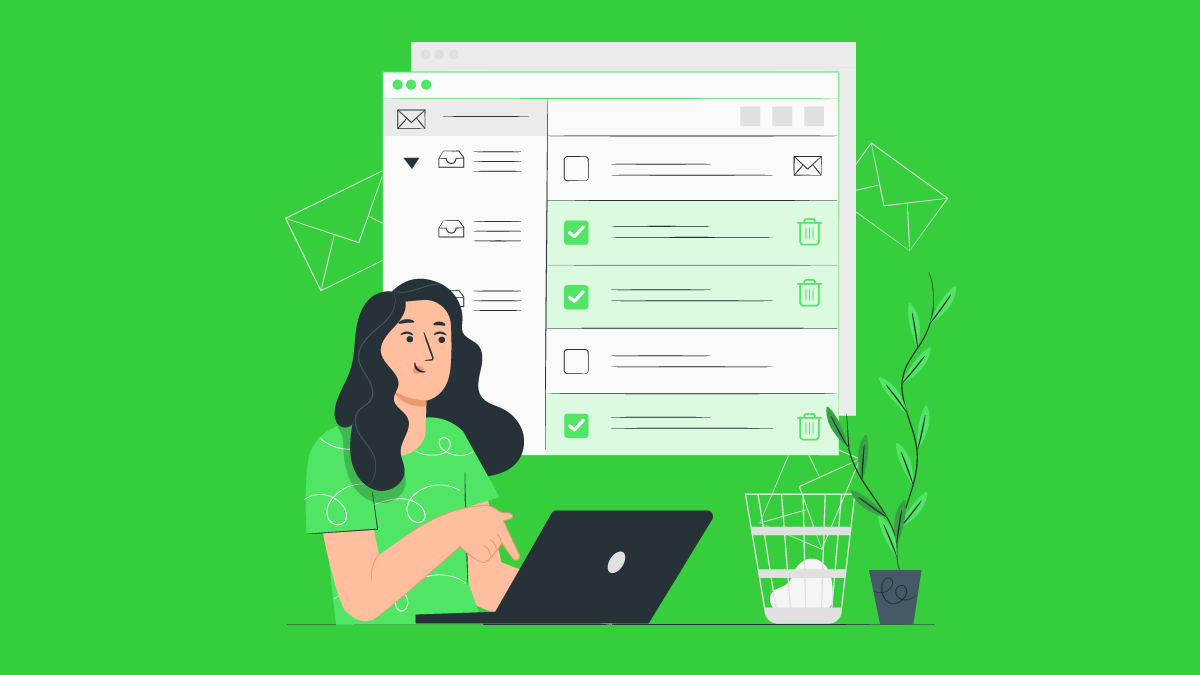
Whether you’re an entrepreneur or a social media executive, chances are you read and answer hundreds, if not thousands of emails every week. It’s a fast, convenient tool to communicate within and outside the company, set up meetings, check in with clients, reach out to customers, suppliers, and more. That said, poor email management can hinder workplace productivity significantly. A cluttered inbox is not only distracting and frustrating but a major time-waster as well. So, to help you maximize your time and guarantee smooth operations, we’ve compiled some expert-approved tips to manage and organize your email on a daily basis.
Make Your Inbox a Top Priority Zone
For starters, make it a habit to dedicate your inbox (your email main landing page) only to those emails that require immediate action. You want to be able to open your inbox and see urgent matters at a glance. Typically, anything that doesn’t require a response within a half-day shouldn’t appear in your inbox. This practice will enable you to boost your productivity by prioritizing your various duties and tasks, which will help you cultivate excellent time-management skills.
Create a “Waiting Folder”
At times, there are emails you can respond to only once someone else has answered and taken action first. This is where a “waiting folder” comes in handy. Whenever you receive such email, rather than let them pile up on your main page, send them to that separate folder for follow-up. Not only will this save plenty of time and contribute to a minimalist inbox, but it’ll also make looking for a specific email considerably easier; something many of us has learned the hard way! Be sure to use a calendar and set reminders to track those emails.
Organize Categories, Subfolders, and Labels
The key to efficient email management is organization. Having a plethora of messages grouped in one place will eat away at your productivity and waste your precious time. As such, establish a labeling and subfolder system. This will help structure and categorize messages, therefore making referencing easier. The experts at CirrusInsight.com explain that this is one of many tricks to help organize your email interface, avoid getting overwhelmed, and not miss an opportunity to drive sales. To take it up a notch, you may want to look into a smart email integration system to always stay on top of your communication.
Have a Few Templates Ready
In an ideal world, we’d take the time to tailor a response to each email we get. However, given the tremendous workloads in many sectors, this will hardly ever be achievable. Whether it’s scheduling a meeting, answering a client’s or customer’s request, or confirming with a supplier, pre-written templates and stock responses will enable you to expedite answering and cross things off your list in no time. Even if you want to tweak your response, this will prove a significant time gain. Browser plugins often have an option for saving reply templates.
Unsubscribe From Unwanted Email
Newsletters, advertisements, and various other “junk mail” are not just distracting, but they can also take up space and bury your important messages, sometimes costing you business opportunities. So, go on a hunt for those emails you no longer want to receive or have no time to read and unsubscribe. Simply search for the term “unsubscribe” in your inbox, and decide from which senders you no longer want to hear from. This can be somehow therapeutic, especially if you tend to receive a lot of unimportant or pointless missives.
Set a Time for Reading and Responding to Email
Lastly, but most importantly, don’t have your email interface open throughout the whole day. New message alerts and notifications can distract you and ruin the flow of your work. Instead, allocate specific blocks of time to check your email, arrange your message in folders, and decide what to read and reply to urgently. How many times you do so largely depends on your activity; some people find it useful to dedicate 15 minutes every two hours, while others will prefer checking their email program no more than three to four times a day. So, assess your typical workload, find an efficient routine, and stick with it!
All things considered, emailing is one, if not the most prevalent forms of communication in and outside the workplace. With that, it only stands to reason that every employee, manager, and executive organize their inbox as efficiently as possible. Once you come up with your own system and add a couple of useful plugins for more practicality, managing your email is bound to become one of the smoothest parts of your workday.




